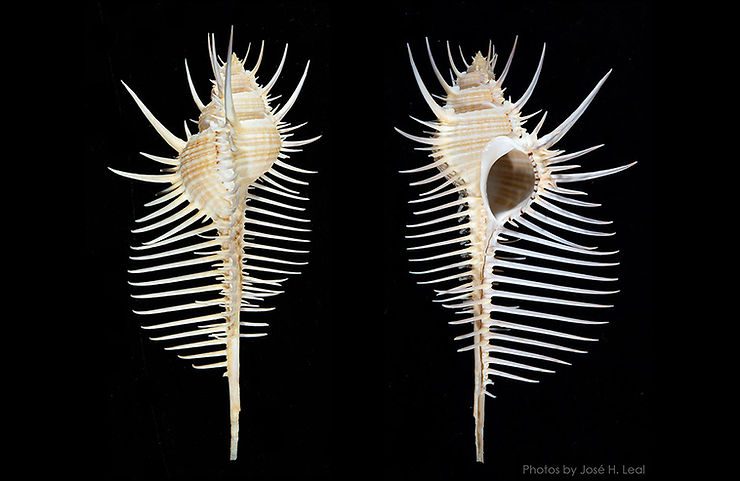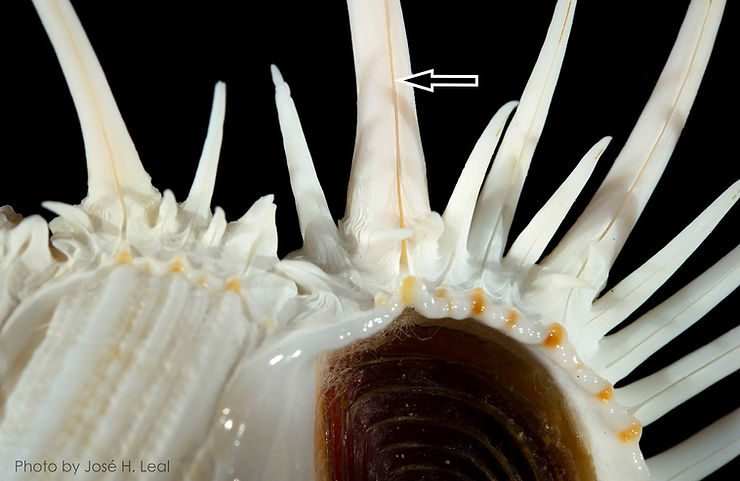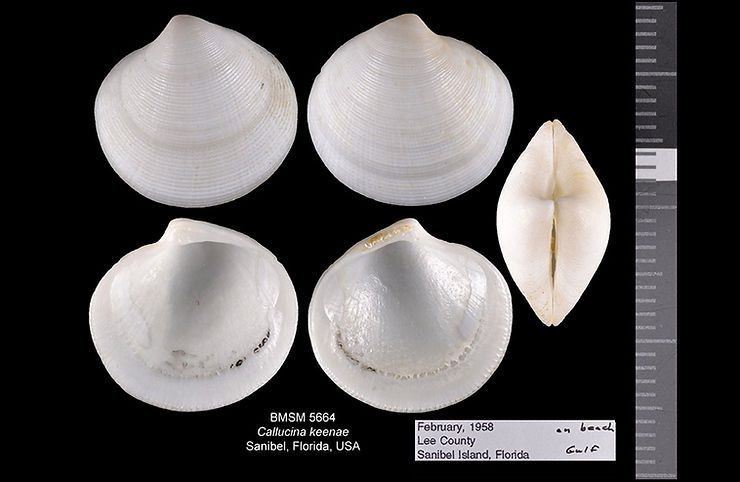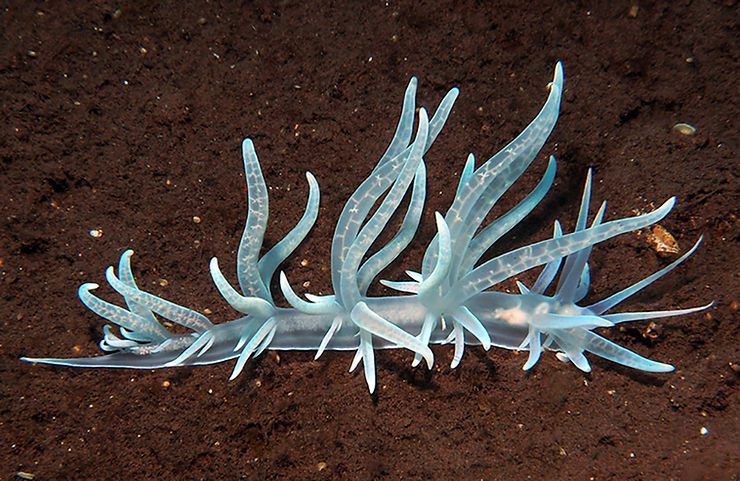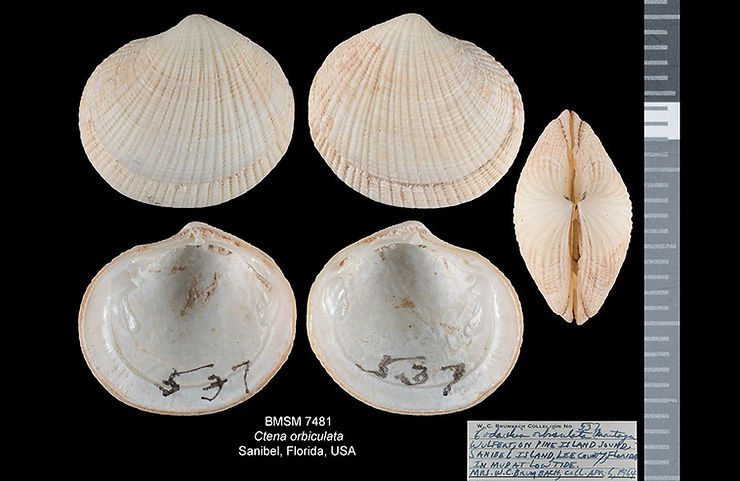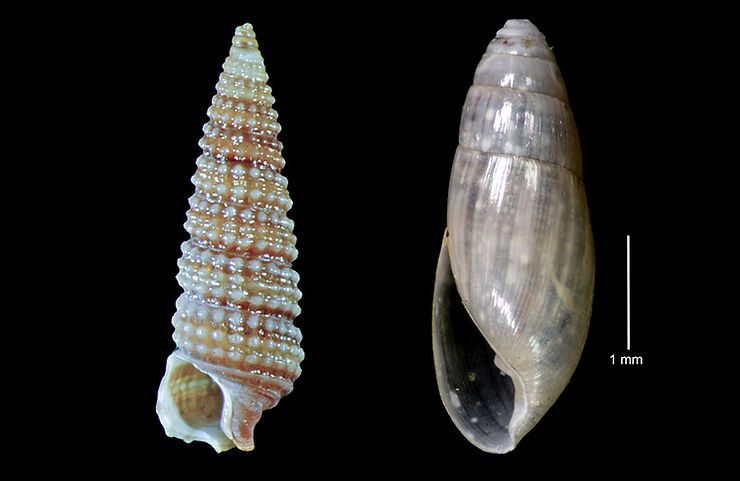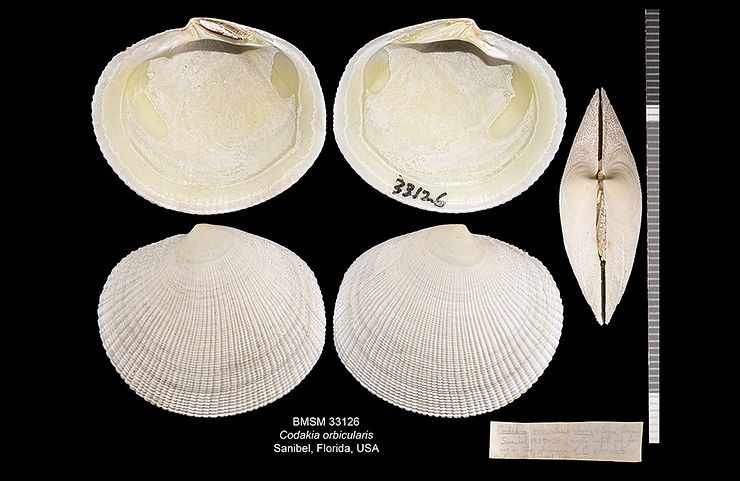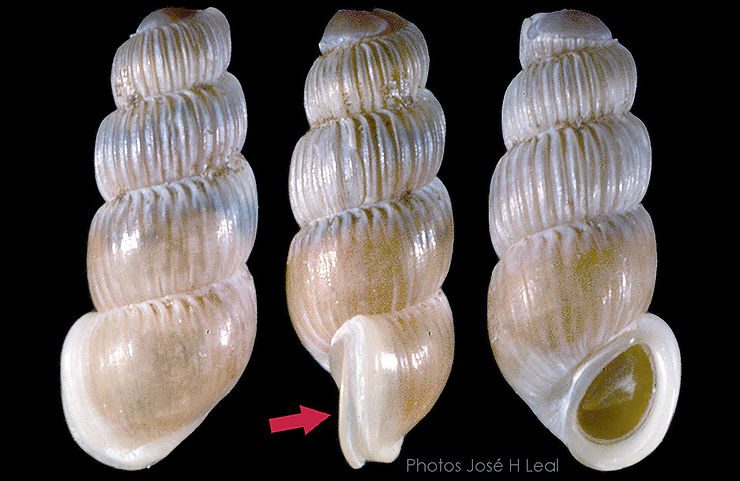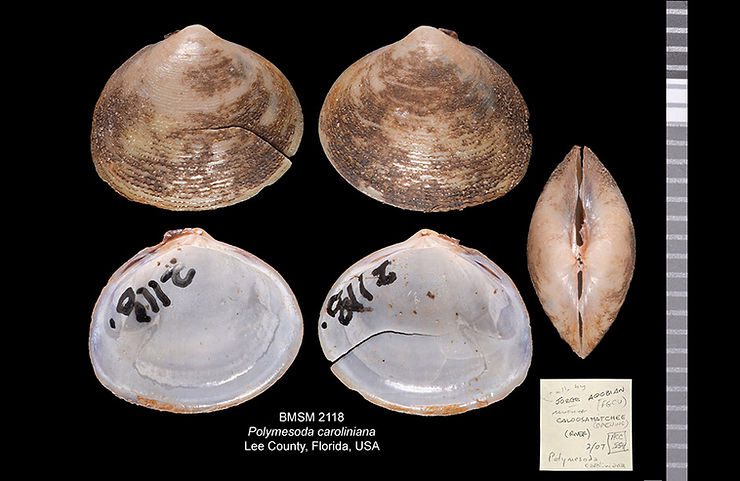
Shell of the Week: The Carolina Marsh Clam
Polymesoda caroliniana Bosc, 1801 may grow to 50 mm (about 2 inches.) Its shell is oval, with a sculpture of fine commarginal (“concentric”) ridges. The shell color is brown. It differs from the Southern Marsh Clam, Polymesoda floridana, by having a more rounded shell with truncated posterior end (left end of leftmost views on photo). This is a truly brackish water species, inhabiting the upper reaches of local estuaries (the shell illustrated was collected in the Caloosahatchee River near dow
